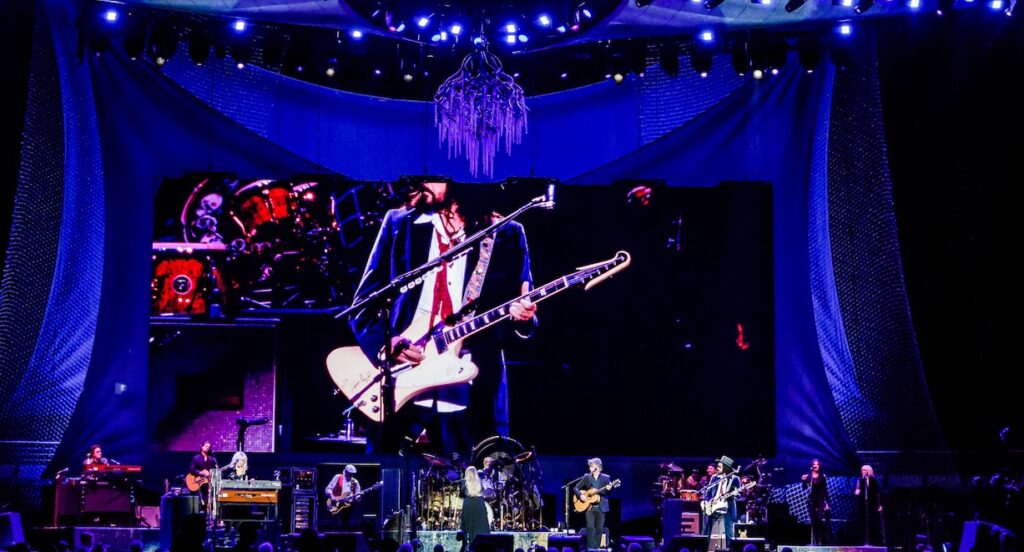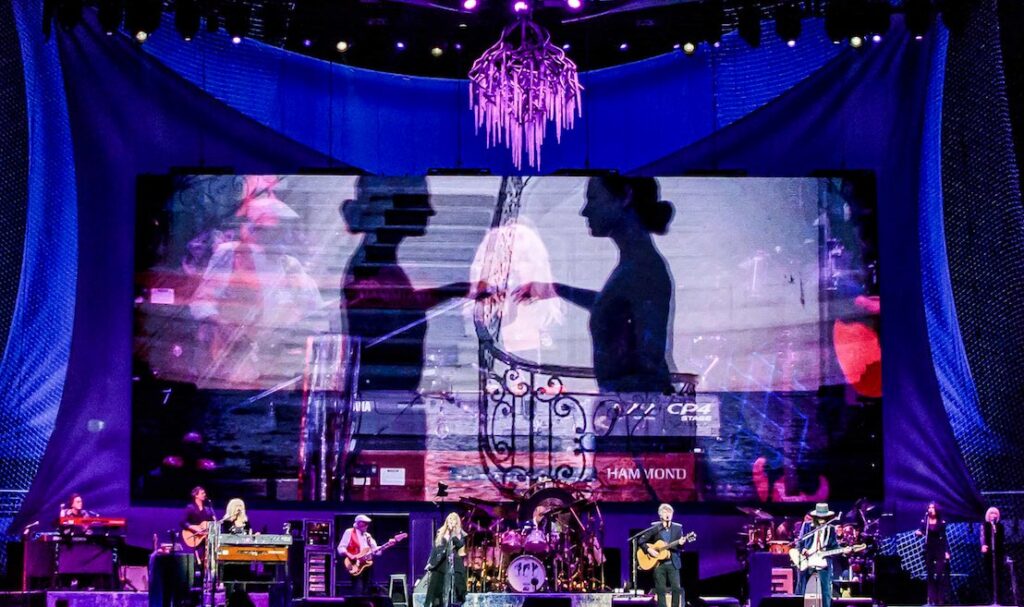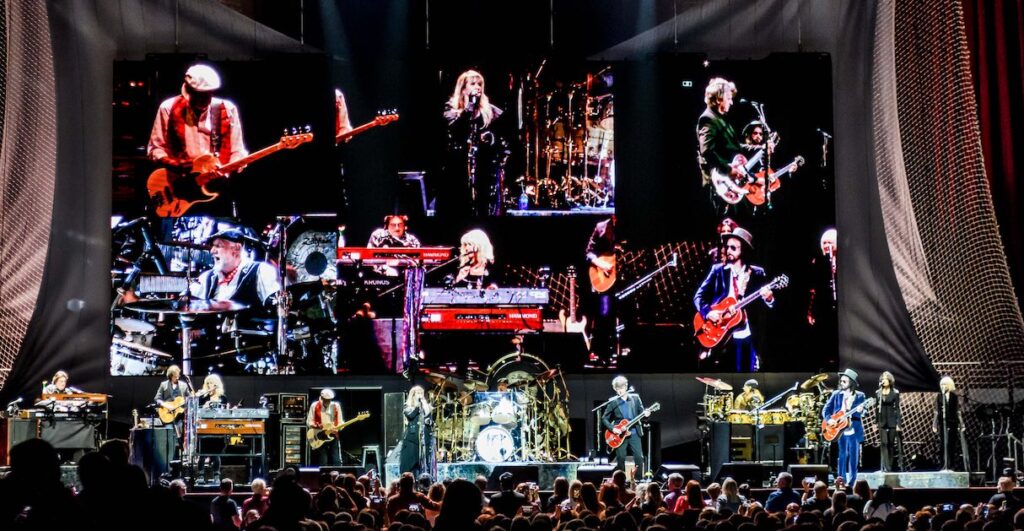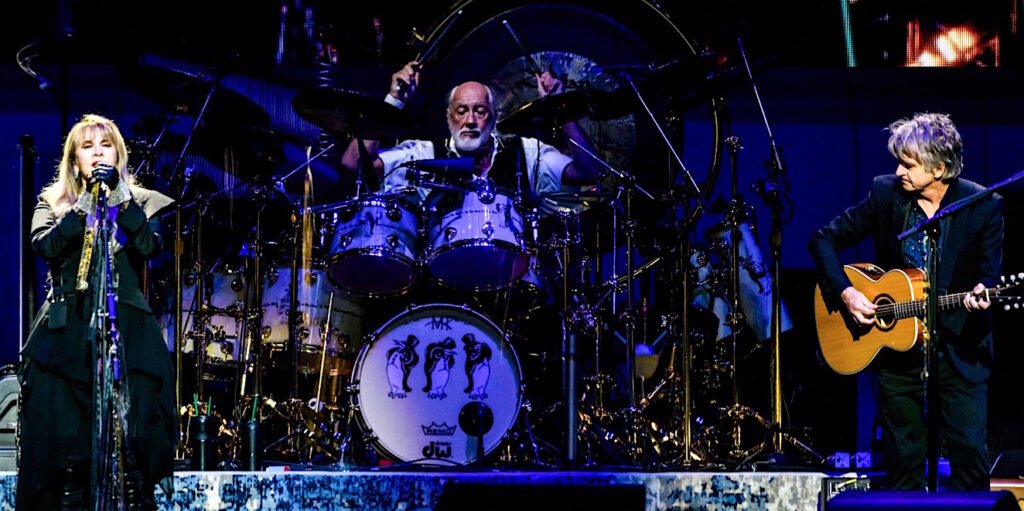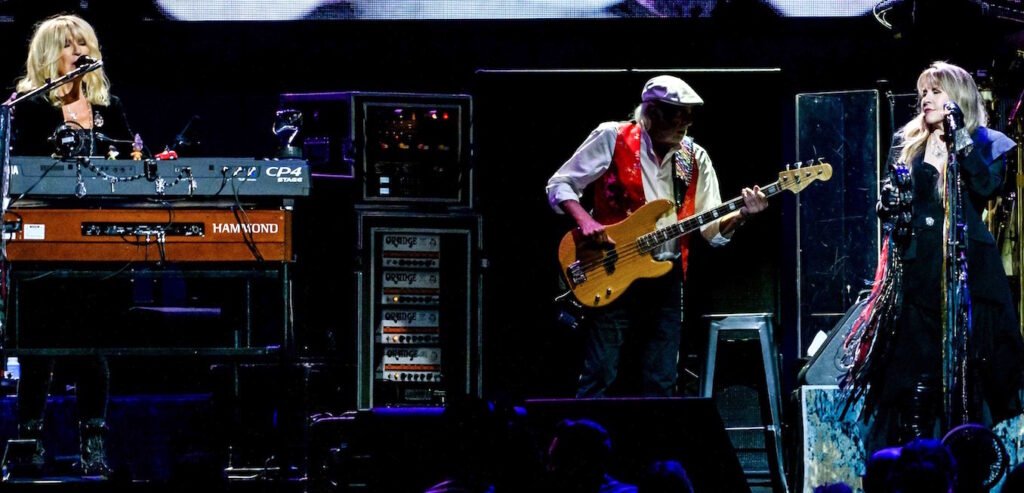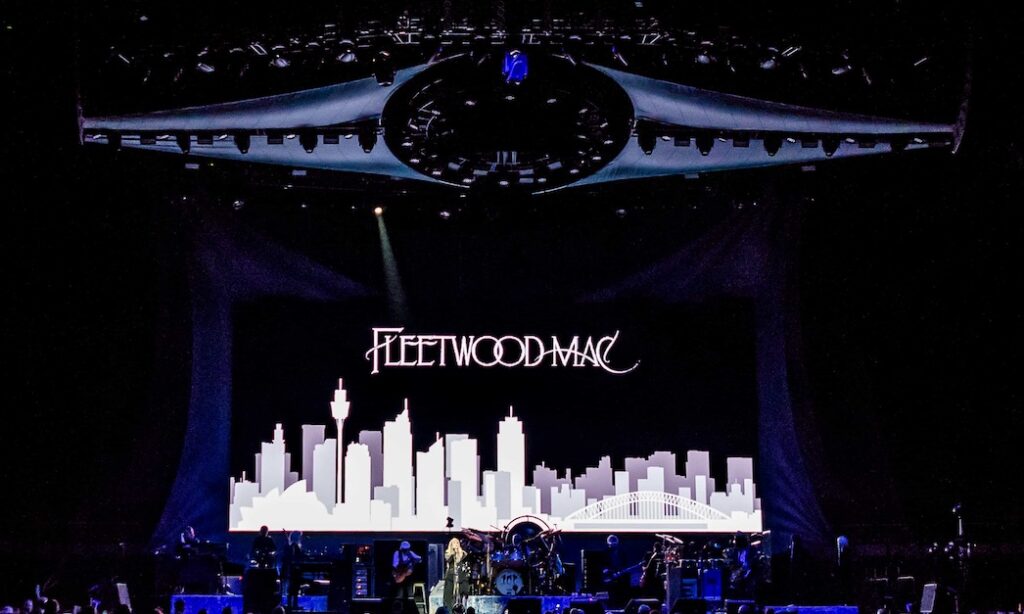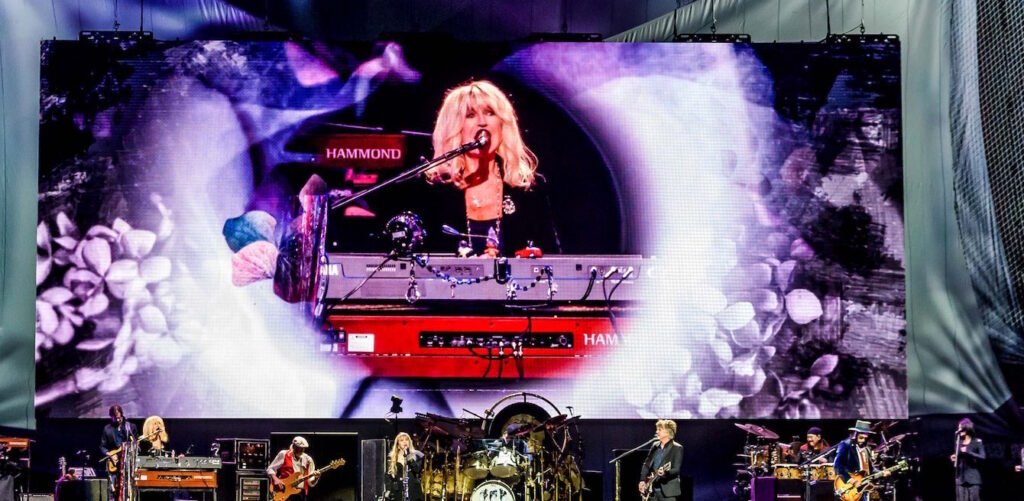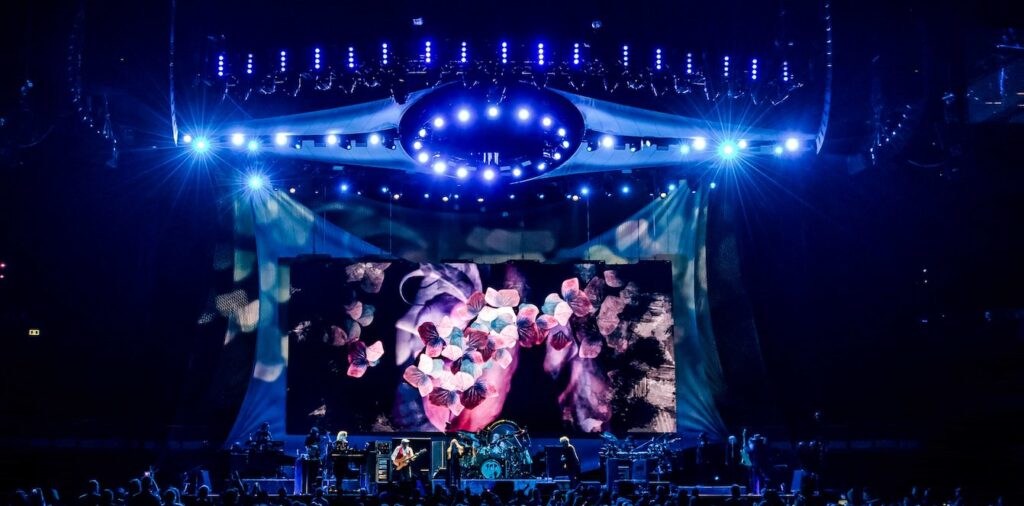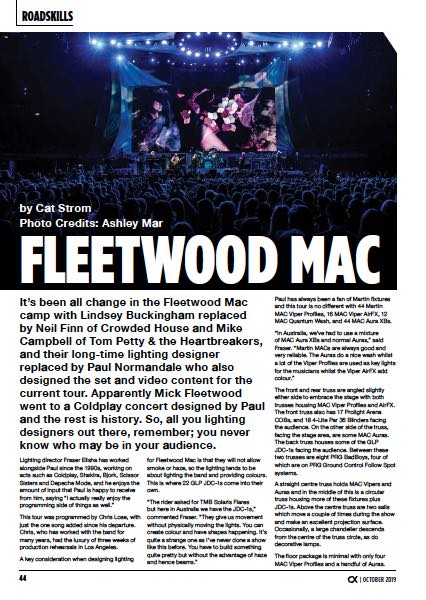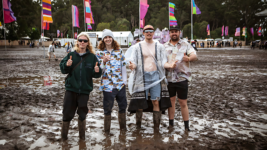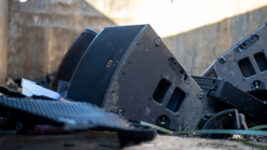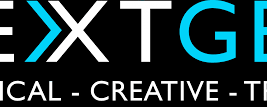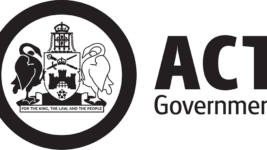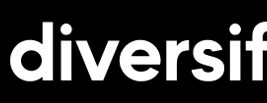News
21 Oct 2019
Fleetwood Mac
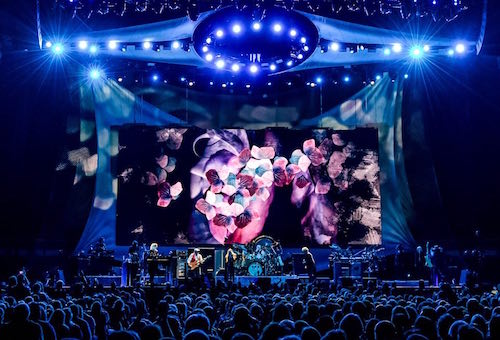
Subscribe to CX E-News
ROADSKILLS
Fleetwood Mac
by Cat Strom.
Photo Credits: Ashley Mar
It’s been all change in the Fleetwood Mac camp with Lindsey Buckingham replaced by Neil Finn of Crowded House and Mike Campbell of Tom Petty & the Heartbreakers, and their long-time lighting designer replaced by Paul Normandale who also designed the set and video content for the current tour. Apparently Mick Fleetwood went to a Coldplay concert designed by Paul and the rest is history. So, all you lighting designers out there, remember; you never know who may be in your audience.
Lighting director Fraser Elisha has worked alongside Paul since the 1990s, working on acts such as Coldplay, Shakira, Bjork, Scissor Sisters and Depeche Mode, and he enjoys the amount of input that Paul is happy to receive from him, saying “I actually really enjoy the programming side of things as well.”
This tour was programmed by Chris Lose, with just the one song added since his departure. Chris, who has worked with the band for many years, had the luxury of three weeks of production rehearsals in Los Angeles.
A key consideration when designing lighting for Fleetwood Mac is that they will not allow smoke or haze, so the lighting tends to be about lighting the band and providing colours. This is where 22 GLP JDC-1s come into their own. “The rider asked for TMB Solaris Flares but here in Australia we have the JDC-1s,” commented Fraser.
“They give us movement without physically moving the lights. You can create colour and have shapes happening. It’s quite a strange one as I’ve never done a show like this before. You have to build something quite pretty but without the advantage of haze and hence beams.”
Paul has always been a fan of Martin fixtures and this tour is no different with 44 Martin MAC Viper Profiles, 16 MAC Viper AirFX, 12 MAC Quantum Wash, and 44 MAC Aura XBs. “In Australia, we’ve had to use a mixture
of MAC Aura XBs and normal Auras,” said Fraser.
“Martin MACs are always good and very reliable. The Auras do a nice wash whilst a lot of the Viper Profiles are used as key lights for the musicians whilst the Viper AirFX add colour.”
The front and rear truss are angled slightly either side to embrace the stage with both trusses housing MAC Viper Profiles and AirFX. The front truss also has 17 Prolight Arena COBs, and 18 4-Lite Par 36 Blinders facing the audience.
On the other side of the truss, facing the stage area, are some MAC Auras. The back truss houses some of the GLP JDC-1s facing the audience. Between these two trusses are eight PRG BadBoys, four of which are on PRG Ground Control Follow Spot systems.
A straight centre truss holds MAC Vipers and Auras and in the middle of this is a circular truss housing more of these fixtures plus JDC-1s. Above the centre truss are two sails which move a couple of times during the show and make an excellent projection surface.
Occasionally, a large chandelier descends from the centre of the truss circle, as do decorative lamps.The floor package is minimal with only four MAC Viper Profiles and a handful of Auras.
Fraser runs the show on two grandMA2 full size consoles with two NPUs and also has an MA2 light onstage as a tech console. PRG Australia provided the tour.
Video Director Jerry McReynolds, who is on his third tour with the band, was dealing with a large 13.8m x 6m Roe CB-8 LED wall as a backdrop which is softened by three separate scrims. Upstage and downstage are fabric scrims whilst the middle is made of netting. There are two side projection screens strictly Imag, with two Barco 20ks converged on each screen.
Four Barco UDX U32 laser projectors, two each side, hang from the truss from where they can project onto the two different surfaces. The sails that move up and down are another projection surface with their UDX laser projectors to the side of the stage shooting upwards.
A disguise d3 media server warps the content so that it fits the space. When the content on the LED screen matches and blends with the projection around it, the effect is quite stunning.
Jerry utilised four FOH manned long lens Sony HSC300 cameras, which run on fiber, five Panasonic AW-HE130 robocams, and four Toshiba POVs, for a total of 13 cameras to capture everything that needed coverage.
Paul Normandale and his team of ‘Stevie’s Angels’ (Judy Jacob, Anna Boberg and Emma Bull) created most of the video content from scratch except for two pieces the band really liked from the last tour which were updated.
Absolutely everything on the LED wall and scrim surfaces runs through a disguise d3 media server which sizes and manipulates content, and effects are done by Notch. All the stage projection is sized/warped by the disguise media server which in turn is triggered by the MA2 FOH.
Big Picture supplied the LED Screen and the projectors whilst NEP Screenworks supplied all the front end equipment such as mixers, switchers and cameras. Both are part of the NEP Worldwide Network.
This is the first Fleetwood Mac tour for veteran sound engineer David Morgan, although he has mixed for Stevie Nicks in the past as well as James Taylor, Paul Simon, Steely Dan, and The Doobie Brothers, to name a few.
“We’re all old friends and as such, trust each other implicitly. We’ve actually had surprisingly few discussions on how I should structure the mix. Neil Finn has been a brilliant addition to the band – instrumentally, vocally and personality wise – and he’s always upbeat and extremely easy to talk to.”
As David has been mixing for many legends over forty years, the band knew they could put their trust in him. “We’re all around the same age; we grew up with the same music, so I know what their songs are supposed to sound like,” David said.
JPJ Audio supplied the tour with a Clair Cohesion CO-12 PA comprising 88 CO-12, 8 CO-8 and 18 CP218 Subs. The band has been a Clair client since the Seventies and after a few decades, David is not changing anything.
“The CO-12 covers in a beautiful way with the sound distributing so evenly, I feel that nearly every seat sounds the same in the room, though we do spend a lot of time during the day to ensure that,” added David.
“The CO-12 throws really well and it’s my favourite arena PA. Since their inception, line arrays have always done a good job of covering horizontally but not so much vertically, with the top cabinets sounding different to the bottom ones and a sweet spot in the centre of the rig. With the mathematical manipulation of the components within the Cohesion series, this does not happen.”
David remarked that the Cohesion Series might possibly be the least complicated modern line array on the market, with component choices and design elements of the cabinet having far greater importance than the dedicated electronics that are built in to running it.
“I’m just so impressed by Clair’s ability to knit high frequencies and mid frequencies together because that’s always been a problem in earlier line arrays,” he added. “It’s so smooth. We can make a huge building like this sound like you’re listening to the big monitors in a studio control room.
“We try to sound as though we’re playing back the records on a large, fat stereo system. I don’t do the kick drum 30dB louder than the rest of the band trick that everyone seems to be hooked on. It’s become a cliché.
“Personally, I’ve never heard a record where the kick drum is that much louder than the rest of the band. But I’m now 70 years old and it’s become a “been there, done that” scenario for me. For this stellar vocal and instrumental band, we are far more interested in presenting a very high energy, yet still sonically accurate representation of the original recordings.”
David was running a DiGiCo SD5 console with a Waves server, saying he’s had nothing but good experiences since they separated the two platforms. Vocal, guitar and bass compressors are all Waves. If it’s a musical instrument, it’s going through a Waves plugin.
“The only outboard gear I carry is a Bricasti M7 reverb, which I love, dedicated to the lead vocal, and a TC Electronics 6000 with four stereo cards in it running guitar, piano, percussion and background vocal reverbs,” remarked David.
“I have about 100 inputs and I usually run the show at 97–103 dB (with peaks at 107-108dB) which sounds big and fat but won’t hurt anybody. If you’re really careful how you set up compressors and such, you can make 100dB sound like 108dB.
“You need to display subtlety and exercise mastery over your devices in order to keep things up in the mix, yet not dominate the arrangement whilst still leaving plenty of room for all the vocals. That’s a benefit derived from 40 years of mixing.”
In microphone world, Christine McVie sings into a Shure KSM8, Stevie Nicks and Neil Finn use Sennheiser e935s, whilst the background singers also use Shure KSM8s. Mick Fleetwood has a very traditional drum set up with Sennheiser 421s on toms whilst Taku Hirano is very modern with nearly all Earthworks mics on his various percussion instruments.
“We have a nice blending of old and new,” said David. “The only unusual microphone we have is a personal mic of mine – a first-run Soundelux U195 on John McVie’s bass cabinet. I’m just in love with it. I could turn the DI off and I could easily get through a show with just that microphone. I’ve been using it exclusively for the past 10 years on bass cabinets.”
For monitoring, the band use a combination of wedges (Clair 12AM, Clair ML-18, Clair R-4) and Shure PSM1000 IEMs with all the singers on IEMs, except for Mike Campbell who prefers wedges. There are two monitor engineers, divided up into boys and girls with Myles Hale on a DiGiCo SD10 doing the girls and Blake Suib does the boys on an Avid S6L.
“It’s a great arrangement that has worked out really well,” commented David. “We do sound check every day and as we have the luxury of having no support band, not a whole lot changes within the mix on any given night or any given venue.
“Our consistency is our main ally and therefore we can do very short sound checks, sometimes only 10 – 15 minutes and we’re good.”
CX Magazine – Oct 2019 Entertainment technology news and issues for Australia and New Zealand – in print and free online www.cxnetwork.com.au
© CX Media
Subscribe
Published monthly since 1991, our famous AV industry magazine is free for download or pay for print. Subscribers also receive CX News, our free weekly email with the latest industry news and jobs.

